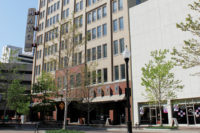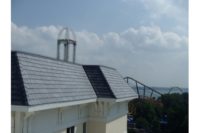Roofing contractors know what a magnet roofs can be for the random debris of society — and it often gets to ferment for several months before anyone notices. Keeping roofs more than clean is something that keeps some scientists up at night. The recent annual meeting of the Reflective Roof Coatings Institute showed how complicated life on the roof can be.
“I find life where we don’t want it,” said Susan Pfiffner, an associate professor with the University of Tennessee. She is one of many professionals dedicated to microbial control in modern buildings.
There were several technical discussions held at the RRCI annual meeting in Orlando, held right before the International Roofing Exposition. The event set an attendance record as more than 60 attendees met to hear the latest in research about cool roofing, elect new officers, and catch up with old friends. This was the seventh annual RRCI meeting and was held prior to the NCRA Annual Convention and International Roofing Exposition in which RRCI was an exhibitor.
RRCI’s outgoing President, Penny Gift, opened the meeting by welcoming the attendees and introducing the incoming RRCI President, Tim Leonard of ER Systems. The annual meeting began with a business meeting that covered 2011 activities and financials, membership vote of new bylaws, and an election on new board of directors.
Pfiffner presented a technical session in which some findings were presented on just how effective a white roof is at reflecting heat. According to her research conducted with Oak Ridge National Laboratories, there’s quite a party going on atop some roofs. Microbes are attracted by the smallest amounts of dirt, then the growing colonies create fuel for other critters that help create those lovely black streaks on roofs.
It appears that the tiniest organisms can have a measurable impact on the reflectivity of roofs. The research is in the early stages and many factors influence the appearance of coatings: climate, shading, surface area, cleaning, insulation, and composition. Past research indicates that most of the reflectivity loss occurs early in the roof’s life cycle, usually the first year. While white roofs continue to prevent heat gains for years to come, cleaning has shown a measurable improvement.
Now it seems that a protocol for cleaning may be addressed. To be sure, manufacturers are concerned about the possibility of poorly trained pressure washers blasting everything in sight with a harsh chemical cocktail.
The aging properties of roof coatings were also a topic at the RRCI meeting. Craig Waldron of Lonza Inc. discussed how suppliers are constantly keeping abreast of changes in the market as well as government regulations. Formulations with low VOCs that can last for years are constantly being fine-tuned. Add all that to a movement towards sustainability (to help meet project goals like LEED certification), and manufactures will be walking the tightrope between market and regulatory forces.
After all, this segment depends upon providing more than just a watertight membrane, and anything that can stain the reputation of reflective roofing is worth looking into.
For more information about RRCI, visit www.therrci.org.







